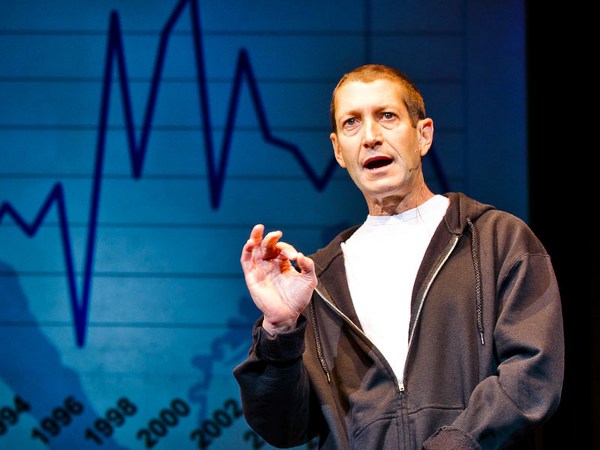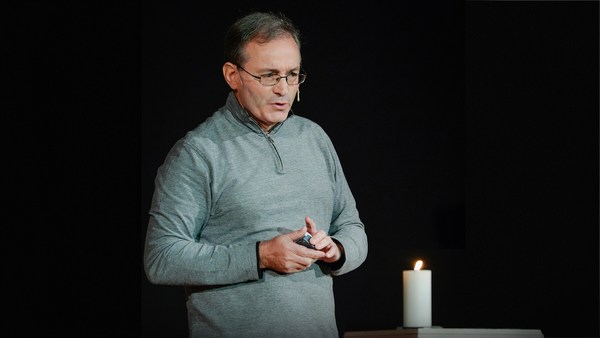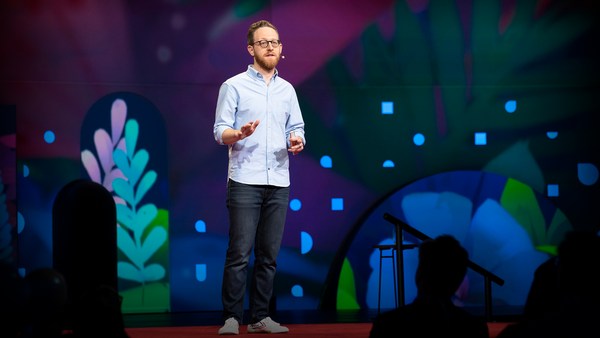For the last year, everyone's been watching the same show, and I'm not talking about "Game of Thrones," but a horrifying, real-life drama that's proved too fascinating to turn off. It's a show produced by murderers and shared around the world via the Internet. Their names have become familiar: James Foley, Steven Sotloff, David Haines, Alan Henning, Peter Kassig, Haruna Yukawa, Kenji Goto Jogo.
Their beheadings by the Islamic State were barbaric, but if we think they were archaic, from a remote, obscure age, then we're wrong. They were uniquely modern, because the murderers acted knowing well that millions of people would tune in to watch.
The headlines called them savages and barbarians, because the image of one man overpowering another, killing him with a knife to the throat, conforms to our idea of ancient, primitive practices, the polar opposite of our urban, civilized ways. We don't do things like that. But that's the irony. We think a beheading has nothing to do with us, even as we click on the screen to watch. But it is to do with us. The Islamic State beheadings are not ancient or remote. They're a global, 21st century event, a 21st century event that takes place in our living rooms, at our desks, on our computer screens. They're entirely dependent on the power of technology to connect us. And whether we like it or not, everyone who watches is a part of the show.
And lots of people watch. We don't know exactly how many. Obviously, it's difficult to calculate. But a poll taken in the UK, for example, in August 2014, estimated that 1.2 million people had watched the beheading of James Foley in the few days after it was released. And that's just the first few days, and just Britain. A similar poll taken in the United States in November 2014 found that nine percent of those surveyed had watched beheading videos, and a further 23 percent had watched the videos but had stopped just before the death was shown. Nine percent may be a small minority of all the people who could watch, but it's still a very large crowd. And of course that crowd is growing all the time, because every week, every month, more people will keep downloading and keep watching.
If we go back 11 years, before sites like YouTube and Facebook were born, it was a similar story. When innocent civilians like Daniel Pearl, Nick Berg, Paul Johnson, were beheaded, those videos were shown during the Iraq War.
Nick Berg's beheading quickly became one of the most searched for items on the Internet. Within a day, it was the top search term across search engines like Google, Lycos, Yahoo. In the week after Nick Berg's beheading, these were the top 10 search terms in the United States. The Berg beheading video remained the most popular search term for a week, and it was the second most popular search term for the whole month of May, runner-up only to "American Idol." The al-Qaeda-linked website that first showed Nick Berg's beheading had to close down within a couple of days due to overwhelming traffic to the site. One Dutch website owner said that his daily viewing figures rose from 300,000 to 750,000 every time a beheading in Iraq was shown. He told reporters 18 months later that it had been downloaded many millions of times, and that's just one website. A similar pattern was seen again and again when videos of beheadings were released during the Iraq War.
Social media sites have made these images more accessible than ever before, but if we take another step back in history, we'll see that it was the camera that first created a new kind of crowd in our history of beheadings as public spectacle. As soon as the camera appeared on the scene, a full lifetime ago on June 17, 1939, it had an immediate and unequivocal effect.
That day, the first film of a public beheading was created in France. It was the execution, the guillotining, of a German serial killer, Eugen Weidmann, outside the prison Saint-Pierre in Versailles. Weidmann was due to be executed at the crack of dawn, as was customary at the time, but his executioner was new to the job, and he'd underestimated how long it would take him to prepare. So Weidmann was executed at 4:30 in the morning, by which time on a June morning, there was enough light to take photographs, and a spectator in the crowd filmed the event, unbeknownst to the authorities. Several still photographs were taken as well, and you can still watch the film online today and look at the photographs. The crowd on the day of Weidmann's execution was called "unruly" and "disgusting" by the press, but that was nothing compared to the untold thousands of people who could now study the action over and over again, freeze-framed in every detail.
The camera may have made these scenes more accessible than ever before, but it's not just about the camera. If we take a bigger leap back in history, we'll see that for as long as there have been public judicial executions and beheadings, there have been the crowds to see them. In London, as late as the early 19th century, there might be four or five thousand people to see a standard hanging. There could be 40,000 or 50,000 to see a famous criminal killed. And a beheading, which was a rare event in England at the time, attracted even more.
In May 1820, five men known as the Cato Street Conspirators were executed in London for plotting to assassinate members of the British government. They were hung and then decapitated. It was a gruesome scene. Each man's head was hacked off in turn and held up to the crowd. And 100,000 people, that's 10,000 more than can fit into Wembley Stadium, had turned out to watch. The streets were packed. People had rented out windows and rooftops. People had climbed onto carts and wagons in the street. People climbed lamp posts. People had been known to have died in the crush on popular execution days.
Evidence suggests that throughout our history of public beheadings and public executions, the vast majority of the people who come to see are either enthusiastic or, at best, unmoved. Disgust has been comparatively rare, and even when people are disgusted and are horrified, it doesn't always stop them from coming out all the same to watch.
Perhaps the most striking example of the human ability to watch a beheading and remain unmoved and even be disappointed was the introduction in France in 1792 of the guillotine, that famous decapitation machine. To us in the 21st century, the guillotine may seem like a monstrous contraption, but to the first crowds who saw it, it was actually a disappointment. They were used to seeing long, drawn-out, torturous executions on the scaffold, where people were mutilated and burned and pulled apart slowly. To them, watching the guillotine in action, it was so quick, there was nothing to see. The blade fell, the head fell into a basket, out of sight immediately, and they called out, "Give me back my gallows, give me back my wooden gallows."
The end of torturous public judicial executions in Europe and America was partly to do with being more humane towards the criminal, but it was also partly because the crowd obstinately refused to behave in the way that they should. All too often, execution day was more like a carnival than a solemn ceremony.
Today, a public judicial execution in Europe or America is unthinkable, but there are other scenarios that should make us cautious about thinking that things are different now and we don't behave like that anymore.
Take, for example, the incidents of suicide baiting. This is when a crowd gathers to watch a person who has climbed to the top of a public building in order to kill themselves, and people in the crowd shout and jeer, "Get on with it! Go on and jump!" This is a well-recognized phenomenon. One paper in 1981 found that in 10 out of 21 threatened suicide attempts, there was incidents of suicide baiting and jeering from a crowd. And there have been incidents reported in the press this year. This was a very widely reported incident in Telford and Shropshire in March this year.
And when it happens today, people take photographs and they take videos on their phones and they post those videos online. When it comes to brutal murderers who post their beheading videos, the Internet has created a new kind of crowd. Today, the action takes place in a distant time and place, which gives the viewer a sense of detachment from what's happening, a sense of separation. It's nothing to do with me. It's already happened. We are also offered an unprecedented sense of intimacy. Today, we are all offered front row seats. We can all watch in private, in our own time and space, and no one need ever know that we've clicked on the screen to watch.
This sense of separation -- from other people, from the event itself -- seems to be key to understanding our ability to watch, and there are several ways in which the Internet creates a sense of detachment that seems to erode individual moral responsibility. Our activities online are often contrasted with real life, as though the things we do online are somehow less real. We feel less accountable for our actions when we interact online. There's a sense of anonymity, a sense of invisibility, so we feel less accountable for our behavior. The Internet also makes it far easier to stumble upon things inadvertently, things that we would usually avoid in everyday life. Today, a video can start playing before you even know what you're watching. Or you may be tempted to look at material that you wouldn't look at in everyday life or you wouldn't look at if you were with other people at the time. And when the action is pre-recorded and takes place in a distant time and space, watching seems like a passive activity. There's nothing I can do about it now. It's already happened.
All these things make it easier as an Internet user for us to give in to our sense of curiosity about death, to push our personal boundaries, to test our sense of shock, to explore our sense of shock.
But we're not passive when we watch. On the contrary, we're fulfilling the murderer's desire to be seen. When the victim of a decapitation is bound and defenseless, he or she essentially becomes a pawn in their killer's show. Unlike a trophy head that's taken in battle, that represents the luck and skill it takes to win a fight, when a beheading is staged, when it's essentially a piece of theater, the power comes from the reception the killer receives as he performs. In other words, watching is very much part of the event. The event no longer takes place in a single location at a certain point in time as it used to and as it may still appear to. Now the event is stretched out in time and place, and everyone who watches plays their part.
We should stop watching, but we know we won't. History tells us we won't, and the killers know it too.
Thank you.
(Applause)
Bruno Giussani: Thank you. Let me get this back. Thank you. Let's move here. While they install for the next performance, I want to ask you the question that probably many here have, which is how did you get interested in this topic?
Frances Larson: I used to work at a museum called the Pitt Rivers Museum in Oxford, which was famous for its display of shrunken heads from South America. People used to say, "Oh, the shrunken head museum, the shrunken head museum!" And at the time, I was working on the history of scientific collections of skulls. I was working on the cranial collections, and it just struck me as ironic that here were people coming to see this gory, primitive, savage culture that they were almost fantasizing about and creating without really understanding what they were seeing, and all the while these vast -- I mean hundreds of thousands of skulls in our museums, all across Europe and the States -- were kind of upholding this Enlightenment pursuit of scientific rationality. So I wanted to kind of twist it round and say, "Let's look at us." We're looking through the glass case at these shrunken heads. Let's look at our own history and our own cultural fascination with these things. BG: Thank you for sharing that.
FL: Thank you.
(Applause)





